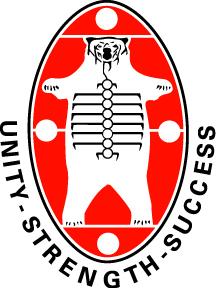Nishnawbe Aski Nation facts for kids
|
ᓂᔑᓈᐯ ᐊᔅᑭ ᐅᑭᐎᓐ
|
|

NAN Logo
|
|
| Abbreviation | NAN |
|---|---|
| Formation | Nishnawbe Aski Nation (known as Grand Council Treaty No. 9 until 1983) was established in 1973. |
| Headquarters | Thunder Bay, Ontario |
|
Region served
|
Treaty 9, Northern Ontario |
|
Official language
|
English, Cree, Ojibwe, Oji-cree |
|
Grand Chief
|
Alvin Fiddler |
| Website | nan.ca |
The Nishnawbe Aski Nation (often called NAN for short) is a special group that represents 51 First Nation communities. These communities are located across a large area in Northern Ontario, Canada. This area includes lands covered by Treaty 9 and Treaty 5.
NAN's main goal is to speak up for the people in these communities. They work with the Canadian and Ontario governments to help improve life for their people. This includes focusing on social and economic needs. The First Nations that are part of NAN include Ojibwa, Oji-Cree, and Cree people. Because of this, the languages spoken within NAN are Ojibwe, Oji-cree, and Cree. NAN's main offices are in Thunder Bay, Ontario. The current leader, called the Grand Chief, is Alvin Fiddler.
Contents
How Nishnawbe Aski Nation Started
The Nishnawbe Aski Nation began in February 1973. It was first known as the Grand Council of Treaty 9. Later, in 1981, the members decided to reorganize and change the name to Nishnawbe Aski Nation. This change happened after some important discussions about their future. The first leaders of NAN were chosen in March 1984. After that, the Grand Council Treaty No. 9 stopped existing.
Who Leads Nishnawbe Aski Nation Now
The leaders of Nishnawbe Aski Nation work hard to represent their communities. Here are the current leaders:
- Grand Chief Alvin Fiddler
- Deputy Grand Chief Anna Betty Achneepineskum
- Deputy Grand Chief Bobby Narcisse
- Deputy Grand Chief Mike Metatawabin
Communities and Land of NAN
Nishnawbe Aski Nation represents 51 First Nation communities. These communities are spread across a huge part of northern Ontario. The land covered by NAN is about 544,000 square kilometers (210,000 square miles). This is a very large area, covering about two-thirds of the entire province of Ontario!
There are around 45,000 people who are members of these communities. This number includes people living both on and off the reserve lands.
How NAN Helps: Departments
NAN has different departments that help its communities in many ways. These departments focus on important areas like education, health, and land rights. They work to make sure the needs of the First Nations people are met.
- Administration
- Communications and Media
- Education
- Employment Opportunities
- Executive Council
- Fiscal Relations
- Governance Secretariat
- Harvesting Unit
- Health
- Infrastructure and Housing
- Land Rights and Treaty
- Lands and Resources
- Social Services
- Treaty Discussion Forum
- Treaty Education Process
- Women's Council
- Youth
How NAN Helps: Programs
NAN also runs various programs to support the well-being of its members. These programs cover a range of topics, from health to youth development. They are designed to improve daily life and create opportunities.
- Aboriginal Diabetes Initiative
- Child Nutrition Program
- Healthy Babies / Healthy Children Program
- Peer Helping Program
- Recreation
- Residential School Project
First Nations Working with NAN
The 51 communities that are part of NAN are often grouped into larger groups called Tribal Councils. These councils help organize and support the communities in their region. There are several Tribal Councils, and a few communities work directly with NAN without being part of a specific council.
- Mishkeegogamang First Nation
- MoCreebec Council of the Cree Nation
- Sandy Lake First Nation
- Independent First Nations Alliance
- Keewaytinook Okimakanak Council
- Matawa First Nations
- Aroland First Nation
- Constance Lake First Nation
- Eabametoong First Nation
- Hornepayne First Nation
- Ginoogaming First Nation
- Long Lake 58 First Nation
- Marten Falls First Nation
- Neskantaga First Nation
- Nibinamik First Nation
- Webequie First Nation
- Mushkegowuk Council
- Shibogama First Nations Council
- Wabun Tribal Council
- Windigo First Nations Council
- Bearskin Lake First Nation
- Cat Lake First Nation
- Koocheching First Nation
- North Caribou Lake First Nation
- Sachigo Lake First Nation
- Slate Falls First Nation
- Whitewater First Nation

